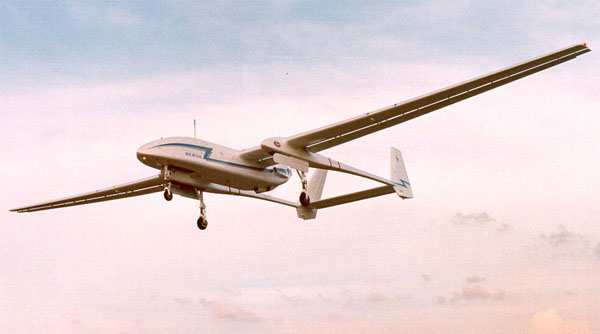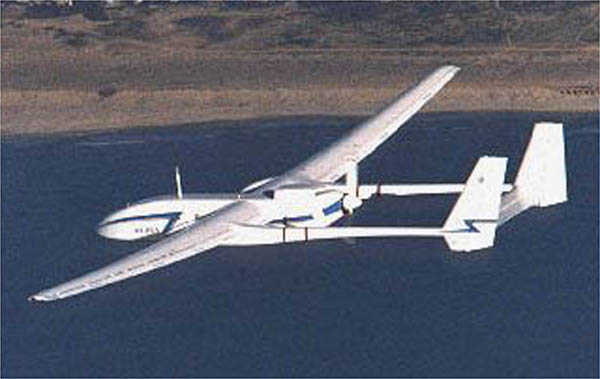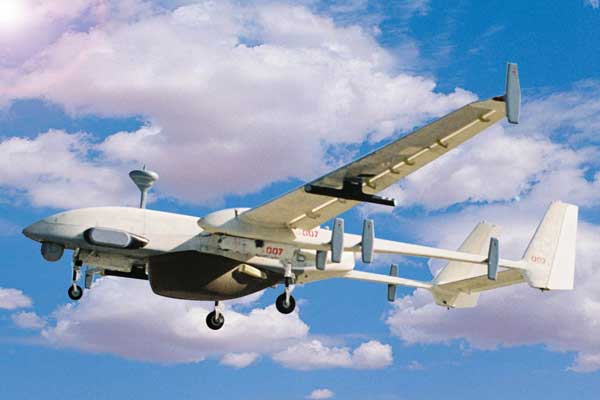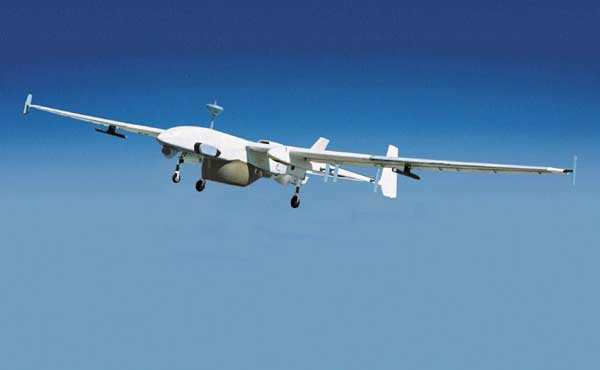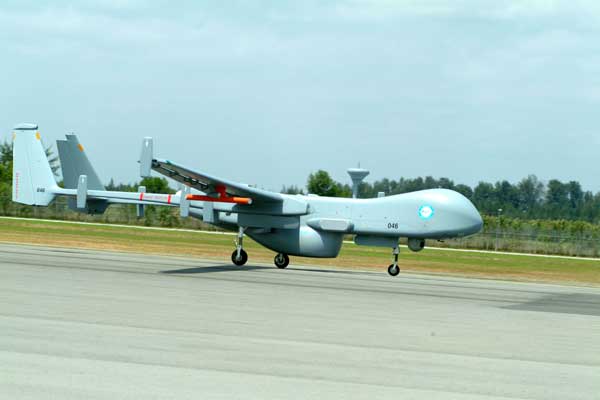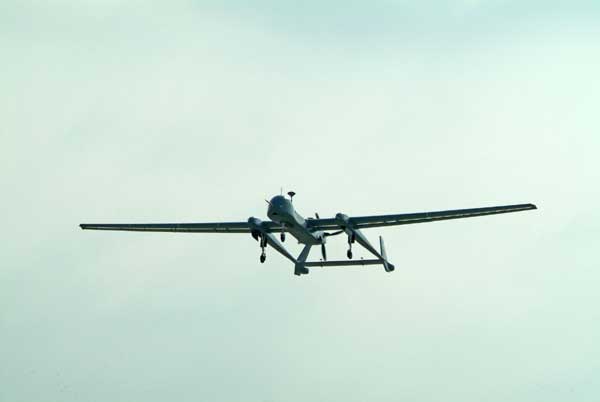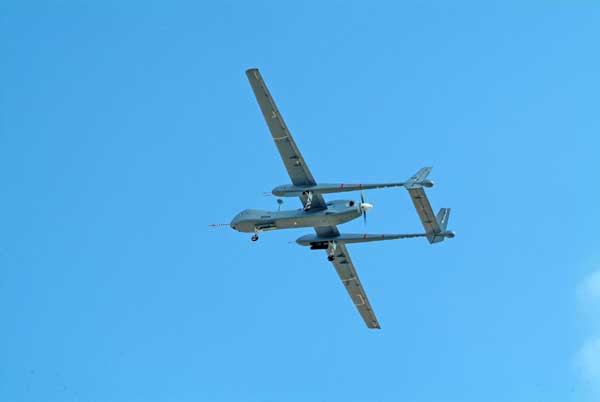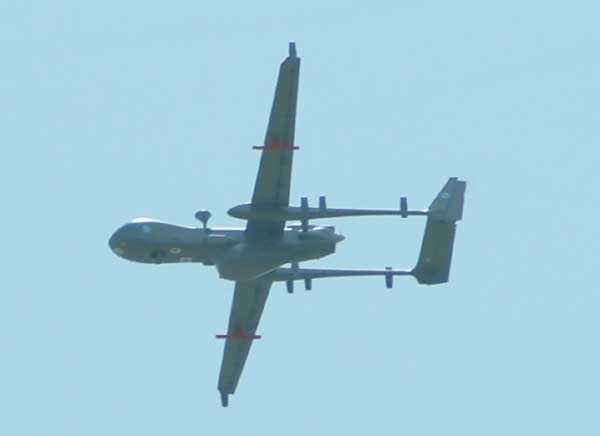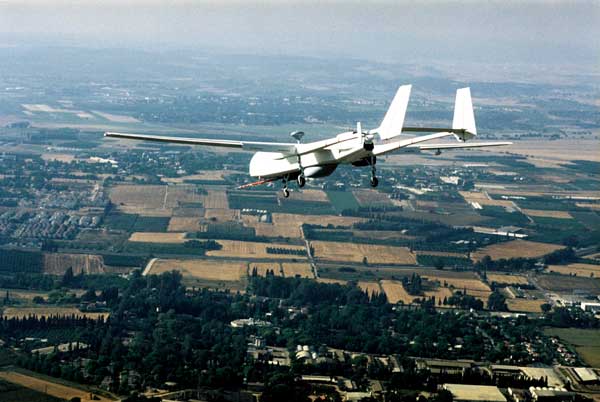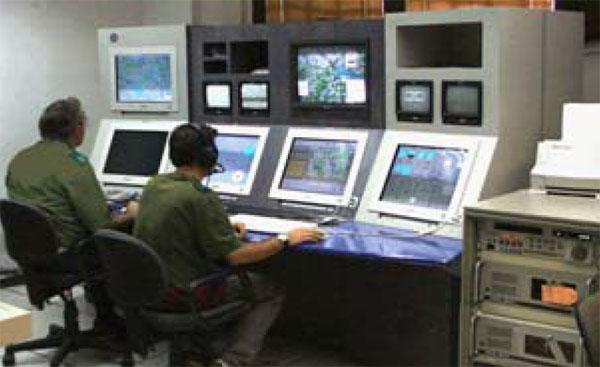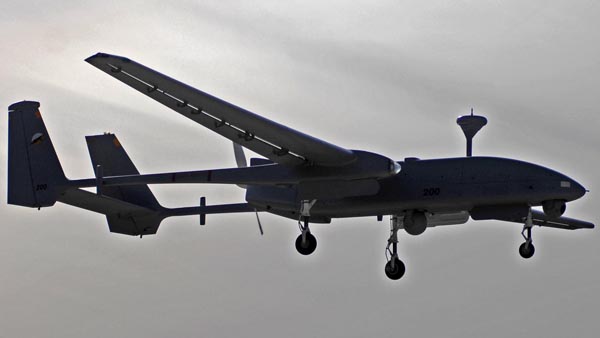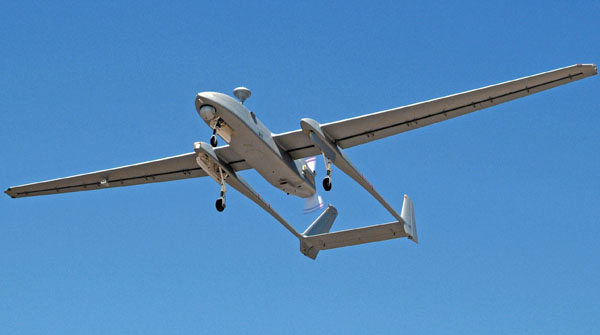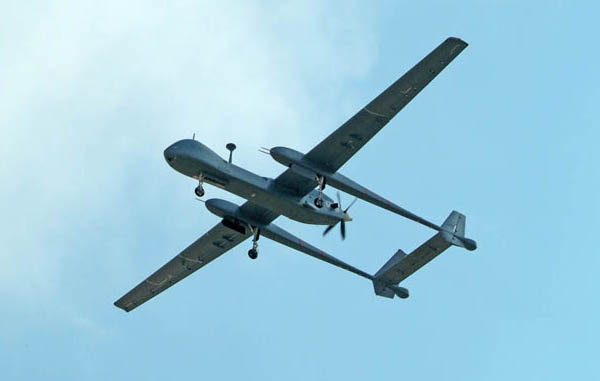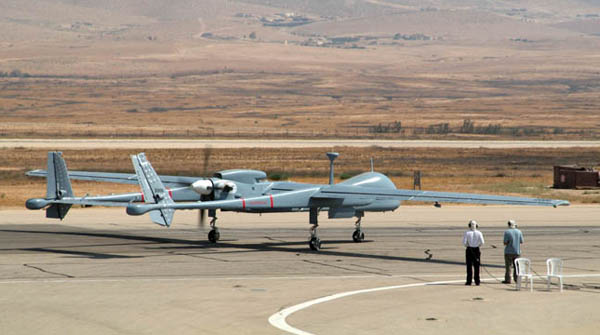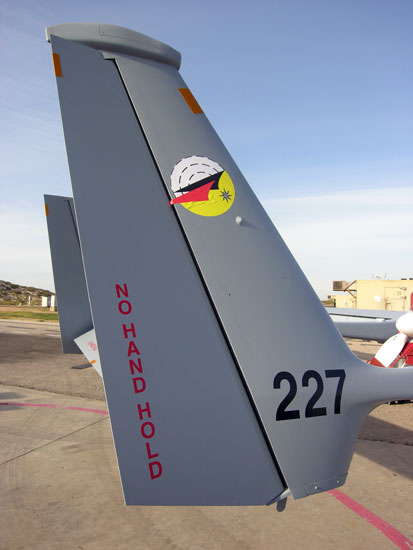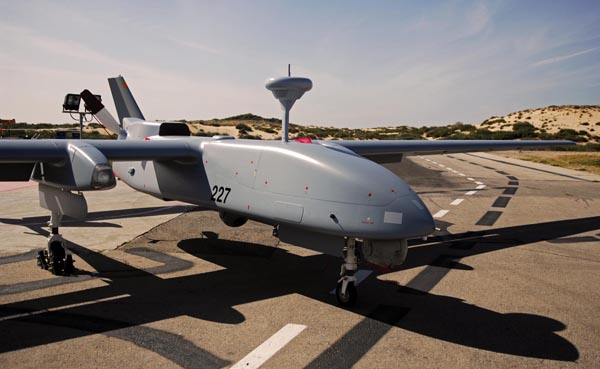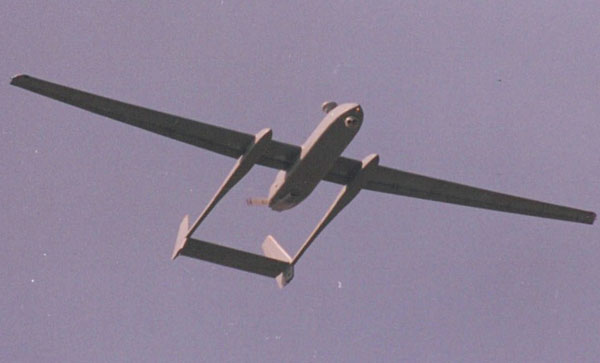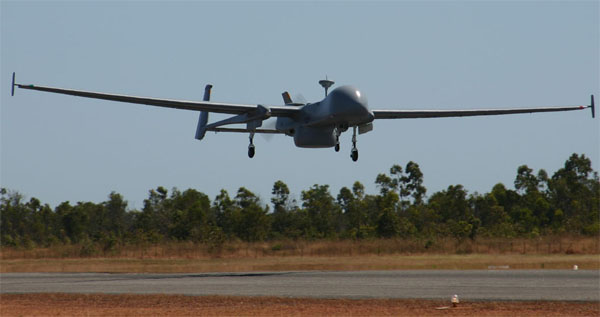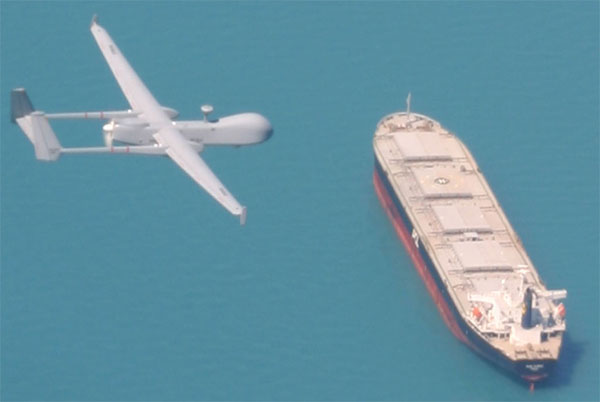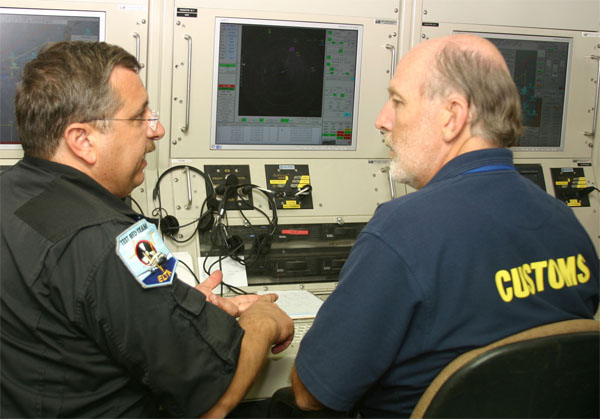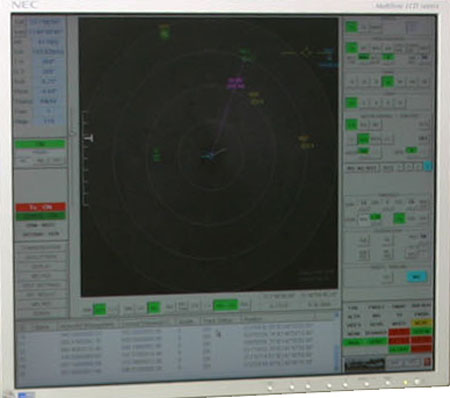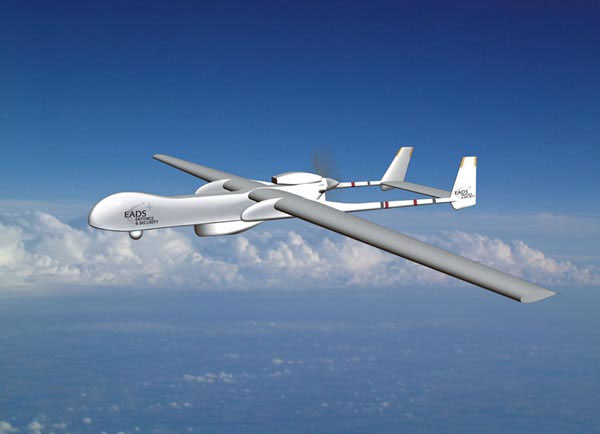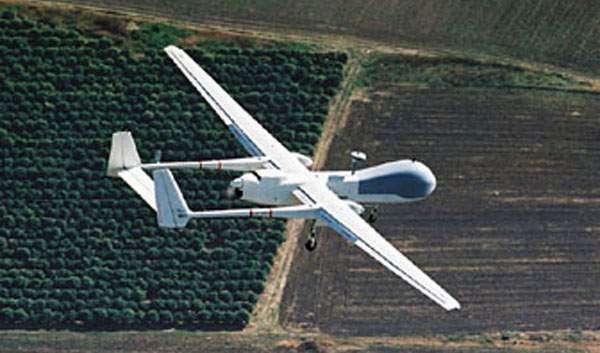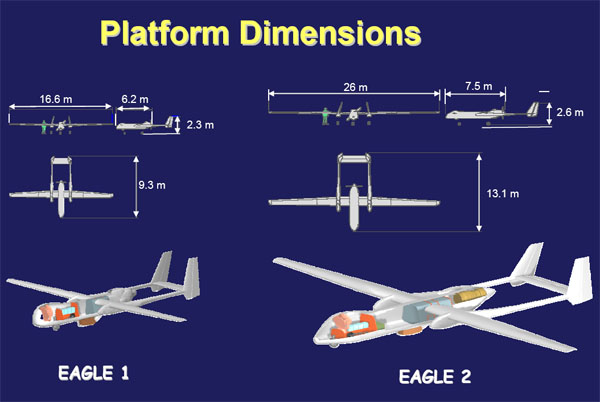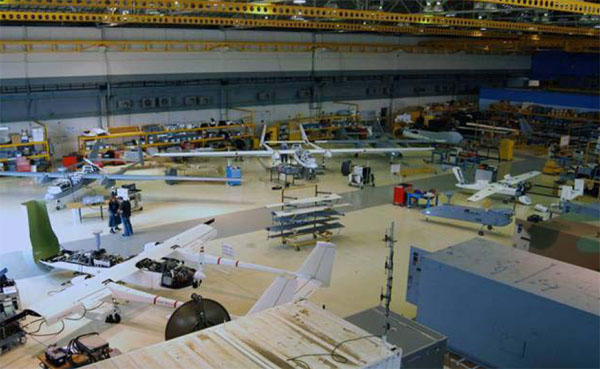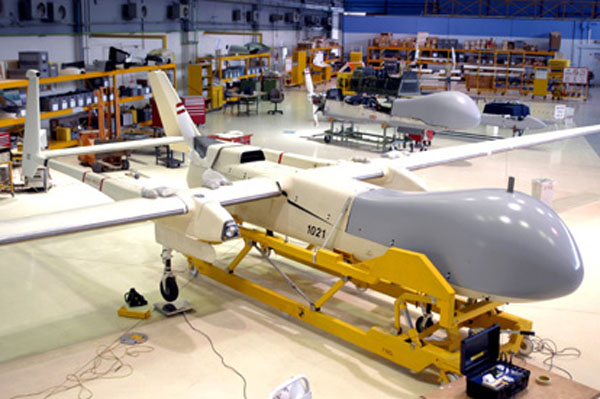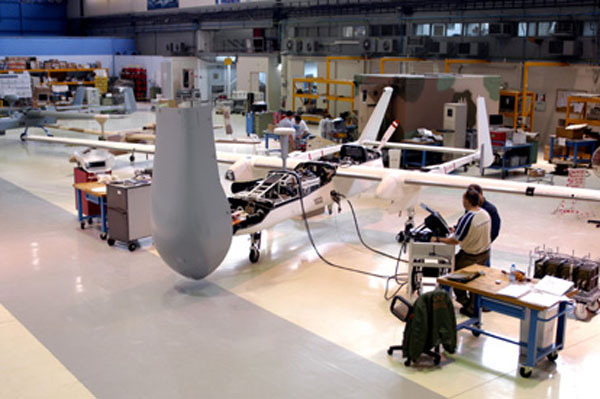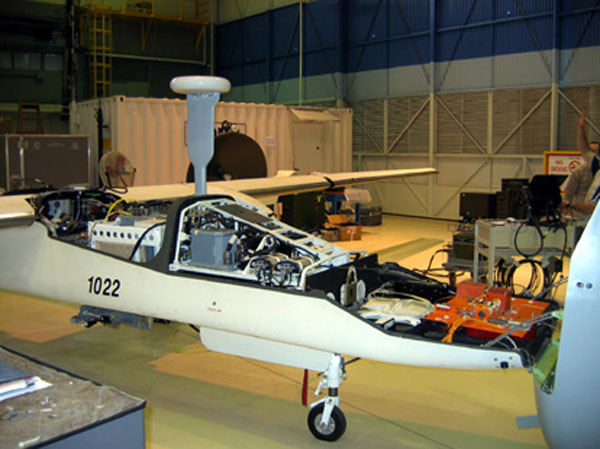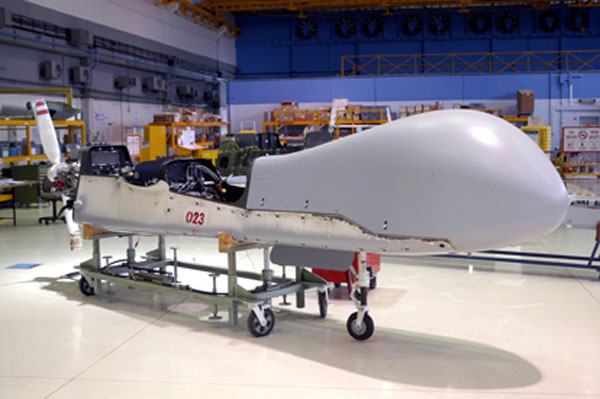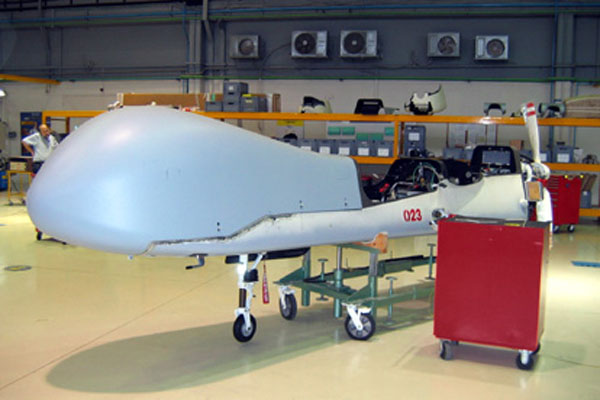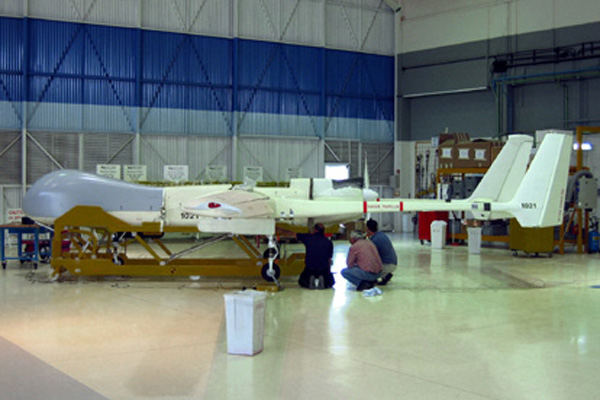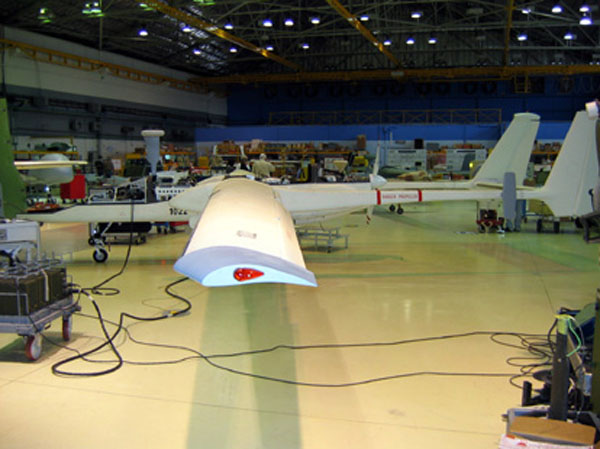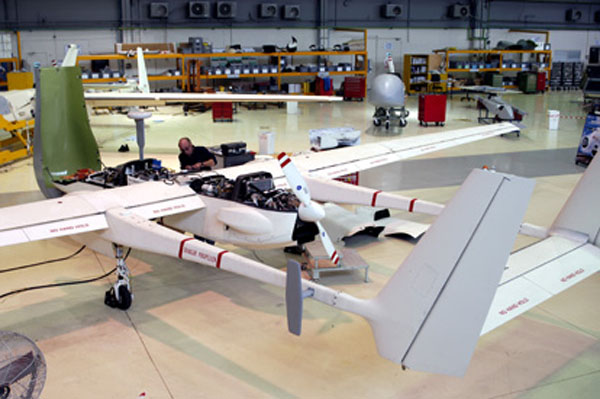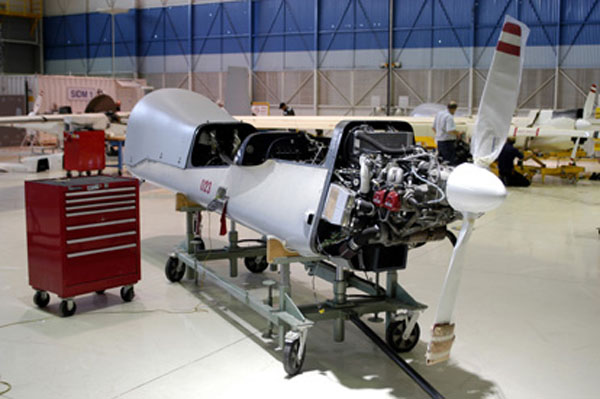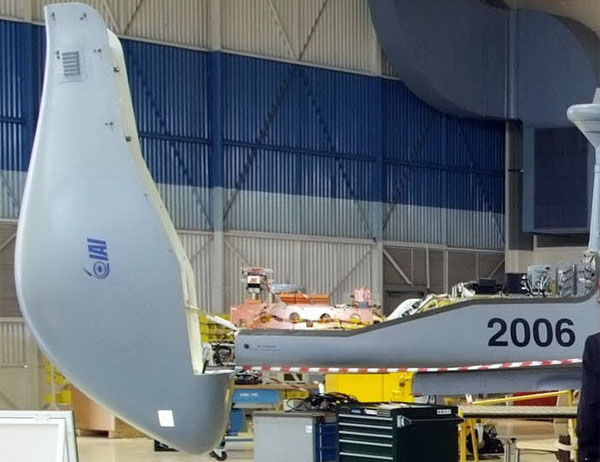رد: الطائرات بدون طيار الاسرائيليه
Heron 2/Mahatz 2/Heron TP/Eitan
After increasing media attention IAI Malat has finally taken the wraps of its newest UAV and the largest yet to be built in Israel, the Heron TP (Heron 2). The choice of Paris Air Show 2007 as the first public showing of the UAV confirms the maturing nature of the UAV market in Europe and IAI says it was difficult to secure the permissions to exhibit the aircraft.
The MALE UAV, which is based on the original Heron design, has a wingspan of just under 26m, length of 14m, and the aircraft has a maximum takeoff weight of 4650kg with a typical mission payload of 1000kg. The UAV is powered by a 1,200hp Pratt & Whitney Canada PT6A turboprop engine that powers a four-blade propeller. The long wingspan and the extra power give the UAV much better endurance, range and altitude than Heron 1.
According to officials the Heron TP has an operational altitude of 45,000ft and is capable of missions of more than 36 hours duration. The UAV has been designed to meet Israel Defence Force (IDF) requirements for a MALE UAV and made its first flights in 2006 at around the time of the Farnborough Air Show.
The system has been dubbed Eitan by the Israel Air Force and is primarily being envisioned for the intelligence, surveillance, and target acquisition role, after the IAF proved its concept of operations in Lebanon war 2006. However, the IDF is believed to be exploring a number of other roles for the aircraft including as an element in a future missile defence system.
The Heron TP has a large payload capacity within its central body and can be fitted with a range of sensors. The UAV has a range of datalinks and is supported for both line of sight and beyond line of sight communications.
The HERON TP main features and capabilities are:
Multi mission platform with multiple operational configurations
Large internal volume for a variety of payloads
Simultaneous and flexible operation of payloads
All weather capability
Operation above commercial traffic
Satellite communication for extended range (SATCOM)
Automatic Takeoff and Landing (ATOL) systems for maximal safety
Triple, fully redundant, state-of-the-art avionics
Retractable landing gear
Safe, reliable and easy operation
Payloads
EO/IR/LRF
SAR
MPR
ELINT
COMINT
Data Links
Liine of Sight
Satellite communication (SATCOM)
Performance
Endurance: 36 hr
Range: Beyond Line os Sight (BLOS
Altitude: 45,000 ft
Technical Data
Max take-off weight: 4,650 kg
Typical mission payload: 1,000 kg
Overall length 14 m
Wingspan 26 m
Engine: 1,200 Hp Turbo Prop
